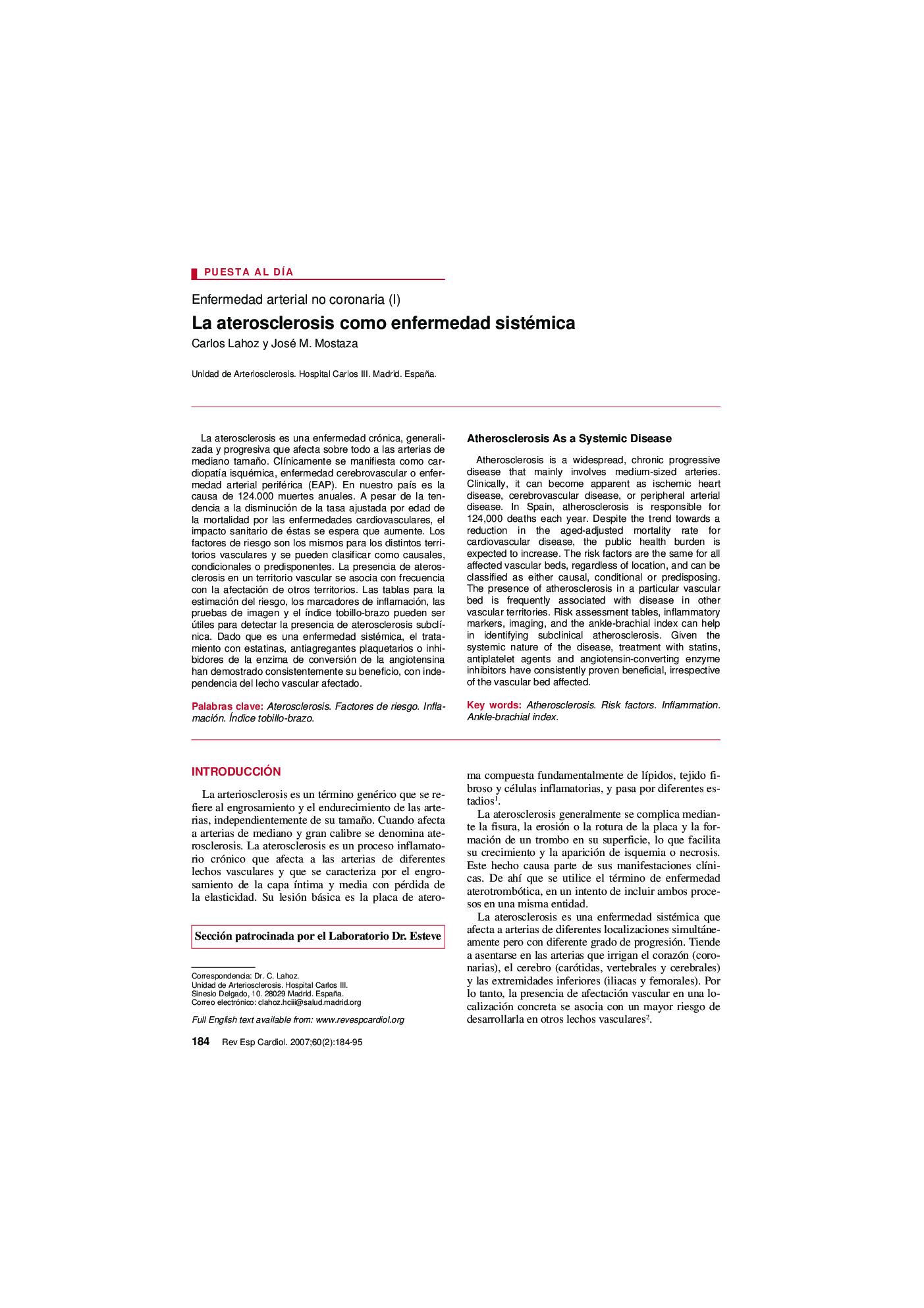| Article ID | Journal | Published Year | Pages | File Type |
|---|---|---|---|---|
| 3015393 | Revista Española de Cardiología | 2007 | 12 Pages |
Abstract
Atherosclerosis is a widespread, chronic progressive disease that mainly involves medium-sized arteries. Clinically, it can become apparent as ischemic heart disease, cerebrovascular disease, or peripheral arterial disease. In Spain, atherosclerosis is responsible for 124,000 deaths each year. Despite the trend towards a reduction in the aged-adjusted mortality rate for cardiovascular disease, the public health burden is expected to increase. The risk factors are the same for all affected vascular beds, regardless of location, and can be classified as either causal, conditional or predisposing. The presence of atherosclerosis in a particular vascular bed is frequently associated with disease in other vascular territories. Risk assessment tables, inflammatory markers, imaging, and the ankle-brachial index can help in identifying subclinical atherosclerosis. Given the systemic nature of the disease, treatment with statins, antiplatelet agents and angiotensin-converting enzyme inhibitors have consistently proven beneficial, irrespective of the vascular bed affected.
Keywords
PAI-IEAPACVAIECAECVITBHTAAITAterosclerosisAtherosclerosisenzima de conversión de la angiotensinaInflamacióninflammationInfarto agudo de miocardioCardiopatía isquémicaEnfermedades cardiovascularesTriglicéridosaccidente isquémico transitorioAccidente cerebrovascular agudoíndice tobillo-brazoABI, ankle brachial indexFactores de riesgoRisk factorsFactor de riesgoHipertensión arterialpresión arterial sistólicaIAMPASPCRproteína C reactiva
Related Topics
Health Sciences
Medicine and Dentistry
Cardiology and Cardiovascular Medicine
Authors
Carlos Lahoz, José M. Mostaza,
